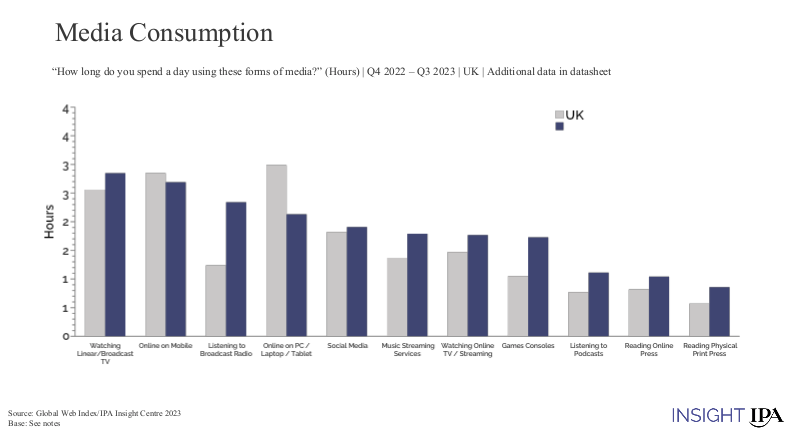Unleash the power of Twitter for your PR campaigns

Need a way to stay on top of the latest news and trends in your industry and manage your company&#x…

At a time when TikTok is now the fastest-growing source of news in the UK, the future of traditional media is a topic that prompts serious debate.
Print magazines and newspapers have been in decline for years; the rise of the internet has made print content less essential in the eyes of many, and advertisers have responded in kind by moving their money to digital advertising rather than print.
But much of the conversation centres around mainstream consumer channels, which exist primarily for entertainment and news. Here, we will examine the state of play within trade media.
Is the trade media following suit? As B2B marketers, should we still be investing in press releases, full page ads and 800-word articles, or would trying to convince the CEO to dance to Cardi B on camera be a better use of our time?
Trade media is the collective term for publications that cater to a particular profession or industry. With such a diverse readership, it would be unwise to try and draw sweeping conclusions about every single magazine, journal or website, so for the purpose of this blog we will focus on construction; although the phenomena we will discuss could apply to most sectors.
An examination of media consumption statistics shows that, yes, construction professionals spend several hours a day online or consuming social media - as expected. However, things get a bit more interesting when you compare their habits to those of the general UK population. Press consumption is higher than average, at up to an hour a day for online outlets. Construction professionals also spend more than double the time listening to broadcast radio, which you could speculate is due to spending more time on the road or working on site than the average person.

Of course, this is just a snapshot with a limited sample. But when you also consider the fact that trade magazines are some of the few print publications that people are still willing to pay for - sometimes to the tune of several hundred pounds a year - it’s clear that this industry isn’t quite declining in the same way as most mainstream media.
This resilience of the trade media can be attributed to several factors. The first is the specialised and often highly technical nature of the content, which can’t always be disseminated through a 30-second video. Successful trade publications deliver news and insights that matter in a style, tone and format that resonates perfectly with their audience.
The second factor likely comes down to the function of trade media. While much of the content might seem ‘dry’ to the unacquainted, trade publications can be a valuable career aid. Whether they’re sourcing new suppliers, building a personal brand, or completing CPD, many professionals still prefer established trade publications due to their established reputations.
However, the strength of trade media lies not just in its content but also in the communities it fosters. Take InstallerSHOW as an example, which has grown year-on-year since its inception and now features 50% more floorspace and more than 600 exhibitors. Why? Because the organisers know their target audience incredibly well, and have formulated an event that caters to every facet of the industry. So much so that the event is seen as an annual pilgrimage for many in the industry to meet, learn, network and let their hair down.
Despite their strengths, trade outlets have also suffered heavy casualties from the shift towards digital. Unfortunately, many outlets have closed or been forced to cut costs, usually by way of redundancies and/or reduced publication frequencies. The publications that have stayed afloat have had to diversify rapidly in order to keep their readership (and the associated revenue) coming through the door. As such, most now offer end-to-end content creation and more sophisticated KPI tracking across various formats, including web articles, videos and podcasts.
Things are changing within print, too. Magazines are moving away from traditional forward features in favour of a more topical and reactive approach to content creation. This is a welcome step forward, in line with the broader trends of agility and reactiveness that come with living in a digital world.
So what does this all mean for marketers?
Leveraging trade media as part of a B2B marketing strategy allows us to reach a niche audience that is already open to receiving information and news from brands. The format of a magazine enables us to explore detailed messaging, while the tactility of print media offers a welcome contrast to digital formats; although both are at their best when used in combination with each other.
To maximise the impact of trade media within the marketing mix, B2B marketers should focus on creating high-quality, informative content that speaks directly to the challenges and opportunities within their target industry. Partnering with respected trade publications can elevate your brand's visibility and credibility, fostering trust and establishing a stronger connection with your audience. As a general rule, subscription titles with an audited circulation offer the most editorial value, although this is not a hard and fast rule.
So, is the trade media dead? Far from it. These publications remain key players in the professional world, delivering deep insights, building communities and keeping pace with digital trends. They may not be the whole puzzle anymore, but they are undoubtedly an important piece of it.
Our B2B and B2C PR experts can connect your brand with the people and organisations you want to connect with.
Find out more